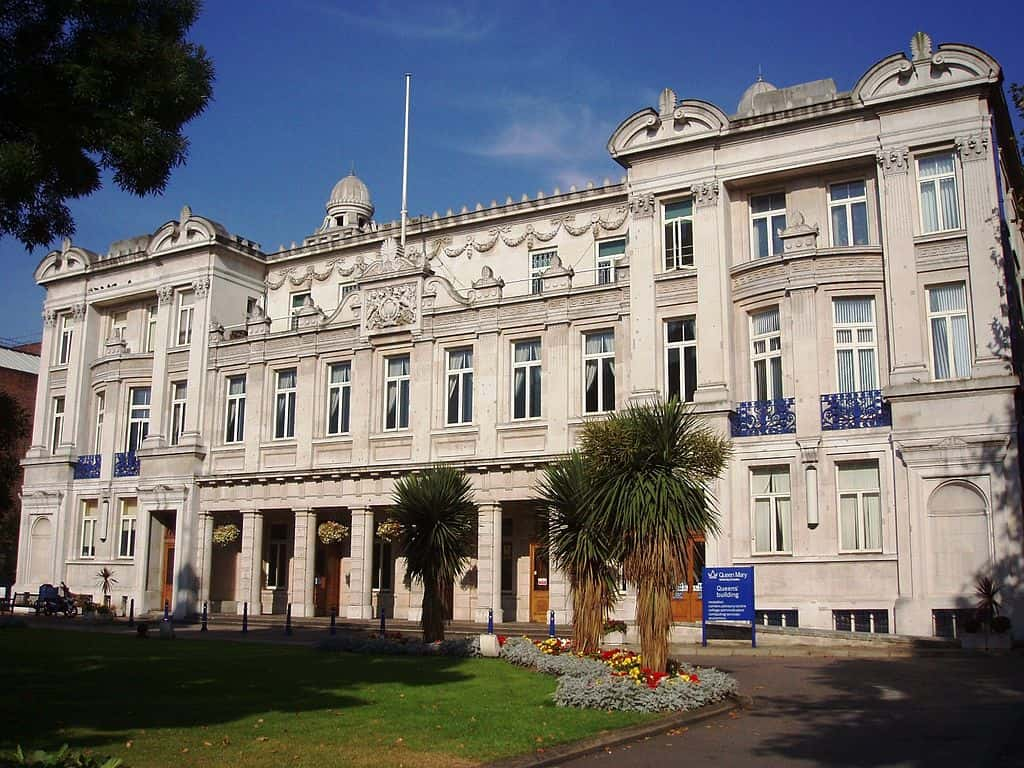What’s it like to be on the other side of the lecture hall? The “Mad Professor” inspires the image of a tweed-clad, slightly unhinged intellectual, doing research and giving lectures with elite ease. But what kind of person commits years of their life to studying to one or two topics? And then teaching it to the masses? Yet where would we be without the discoveries of these intellectuals and all the grad students who held them up? Where would our GPAs be? For starters, we might not have “Twinkie diets” or webcams. Cram to these 24 bizarre facts about real-life mad professors.
“He said that academia reminded him of a badly run circus. The faculty members were like underfed animals—weary of their cages, which were never large enough to begin with—and they responded sluggishly to the whip. The trapeze artists fell with monotonous regularity into poorly strung nets. The clowns looked hungry. The tent leaked. The crowd was inattentive, shouting incoherently at inappropriate moments. And when the show was over, no one cheered".—Susan Hubbard.
1. Paranoid Parsons
Good-looking, ambitious, and brilliant, Jack Parsons was an American rocket engineer and chemist at the height of his powers in the 1940s, until he began exhibiting disturbing desires and bizarre predilections. Parsons started turning away from science and toward the occult, becoming involved in the infamous Aleister Crowley’s Thelema movement and then cavorting with Scientology founder L. Ron Hubbard.
Parsons met his end in 1952 in a lab explosion that remains a mystery today—but those who knew him have suggested a disturbing possibility. Though Parsons was paranoid at the time that the FBI were spying on him, two of his fellow Thelema followers believed he took his own life. Others had even more bizarre ideas: they suggested it was a hit from Howard Hughes, as Parsons had previously stolen documents from the Hughes Aircraft Company. The authorities, however, ruled it an accident. Whatever the real reason, his passing has never been satisfactorily explained.

2. Tongue of Steel
Man of Steel developed “Kryptonian”—the language of Superman’s home planet—with the help of a Christine Schreyer, an associate professor of anthropology who teaches at the University of Columbia.
 Man of Steel (2013), Warner Bros.
Man of Steel (2013), Warner Bros.
3. A Meal Fit for a Prof
Out to prove that calorie counting is the most important part of weight-loss, Professor Mark Haub of Kansas State University went on a “Twinkie diet". In 2010, the professor ate nothing but Twinkies—of course. He also had Little Debbie snack cakes, cereal, cookies, brownies, Oroes, Doritos, and other popular junk foods that are low in nutrition but high in calories. Alongside this dream regimen, Haub also ate multivitamins, protein shakes, and fresh vegetables. How did this balance out? The professor lost 27 pounds in two months.
4. Mayo Power
In late 2016, about 1,250 gallons of mayonnaise went bad at Michigan State University. Not one to let a good thing go to waste, the institution’s Sustainability Officer the dumped the spoiled mayonnaise into an anaerobic digester. The result was enough energy to power part of the university’s campus.
5. It’s Alive!
They say a mind is a terrible thing to waste. Thus, a scholar at the University of Florida followed that advice to its natural conclusion and “made” a mind. In 2005, Thomas DeMarse and his team grew a “living brain” in a dish. Made from “a network of 25,000 rat brain cells,” the little miracle could connect with electrodes that would then interface with a computer. Eventually, the brain could learn to fly a simulated F-22 fighter jet in a variety of weather conditions.
6. A for Atomic
In 1977, an underachieving scholar at Princeton University turned in another term paper. This wasn’t a typical term paper: it successfully designed a nuclear explosive. The student got an A, but the FBI took the assignment from the university’s hands and classified his findings.
7. Food for Thought
A University of Ottawa professor named Dr. Yoni Freedhoff was invited to give a speech on how the food industry could improve public health. Unfortunately, just three days before the speech, the venue dropped him because his presentation “exposed” certain tactics used by private marketers of top food brands. Instead, Freedhoff posted his speech to YouTube, where it has almost 300,000 views and counting.
8. For How Long the Bell Tolls
Atop the Clarendon Library at Oxford University, there sits a bell that has been ringing non-stop for more than 175 years. Made of one of the first electric batteries, called a “dry pile,” scholars would salivate at the thought of dissecting the bell to discover what it’s made from. Why don’t they? Opening the bell would spoil the experimental question of “How long will it keep ringing?”.
9. From Academia to Animation
Not all people with PhDs teach college. Some write for cartoons. Case in point: Futurama has enough PhDs to make its own (small) university department. Altogether, writers on the cartoon’s staff had three PhDs, seven master’s degrees, and clocked in more than 50 cumulative years at Harvard University. Writer Patric M. Verrone has said, “We were easily the most overeducated cartoon writers in history".
10. Slow and Steady Wins the Race
One of the longest-running university experiments in human history has been ongoing since 1927. Queen Mary University of London is still testing the viscosity of pitch (or bitumen). Since the experiment began, a boatload of professors “adopted” (or rather “inherited” ...) the project from many successors, and jus tnine drops have formed in total. Hang in there, everyone!
11. Tree of Life
Science profs don’t get to have all the fun: an art professor at Syracuse University in New York named Sam Van Aken invented a one-of-kind orchard tree that bears 40 different types of fruit. This “Tree of 40 Fruit” was made after he learned an orchard of 150-to-200-year-old trees was about to be destroyed.
12. Coffee on Camera
University researches gave us the most important invention of the millennial age: the webcam. The University of Cambridge had a special coffeepot in one it its computer labs called the “the Trojan Room coffee pot". It was designed to save users from the common disappointment of getting up from your office to get a coffee just to find an empty pot. The camera provided a live feed of the coffee status, so workers wouldn’t need to sacrifice such precious minutes in hope of caffeine. In 1991, it inspired the first regular webcam. What can’t coffee do?
13. Watchlist
A postdoctoral researcher at the University of Montreal’s School of Social Work tried to conduct a study comparing men who abstained from watching dirty videos on the web versus women who abstained. The study was canceled because the scholar could not find any men.
14. Big Brains, Big Money
Thales of Miletus was a leading scholar of his age and a contemporary of Aristotle himself. Despite his academic accomplishments, the people wondered how he could be so smart if he wasn’t rich. To show the haters, Thales used his weather knowledge to predict that year’s olive crop trends, purchase the oil presses, and making a pretty profit on the market.
15. Smize Your Way Through School
In 2016, supermodel and media mogul Tyra Banks taught a class a Stanford University called “Project You: Building and Extending your Personal Brand". It was open to just 25 students and taught aspiring influencers how to cultivate a personal brand using social media. Sounds like a good way to turn “me time” into class credit.
16. Choose Your Own Adventure
Isaac Newton was a notorious airhead at Cambridge University. Sometimes, he would head to the dining hall, forget what he was doing, retrace his steps back to his room, and then simply forget to eat. His friends were frequently frustrated, as Newton would sometimes be tasked to bring the wine, forget what he was doing, and then take the bottle back home with him. Should’ve put him on salad duty.
17. Market Crash
One time, father of modern economics Adam Smith was so enthralled in giving a speech about his theories, he fell into a pit of chemicals at a tanner’s yard and had to be rescued.
18. Feeling Crabby
When Jean-Paul Sartre wasn’t busy as a big French scholar and existentialist, he was busing being obsessed with crabs. He loved the creatures, especially taking an interest in their libidos. Sartre even claimed that crabs once mobbed him down on the streets of Paris. According to Sartre, he eventually chilled out and simply greeted them politely.
19. Nothing to Hide
Some profs are too committed to their work. In 2015, MIT neuroscience professor Nancy Kanwisher shaved her own head bald, so her grad student could draw on it. Not just for kicks: Kanwisher wanted to show her students the specific regions of the brain responsible for sight and other functions. And they saw everything.
20. You Better Believe It
There’s owning your “niche” and then there’s James Hervey Hyslop, a Professor of Logic and Ethics at Columbia University from the 1890s. He hated superstition and myth so much, he refused to read a novel until he was 30 years old. And yet, he believed with all his heart that ghosts walked the earth and would talk to him.
21. Don't Touch Me
Nikola Tesla is infamous for his eccentricities and his brilliant work with AC electrical current—but few people know about his even darker history. Tesla once experimented with creating a particle gun, which he believed could be calibrated to wield enormous destruction. He also developed disturbing paranoid habits, especially later in his life: he refused to touch another person’s hair, and was reportedly once convinced that a white pigeon was trying to communicate with him.
 Wikimedia Commons
Wikimedia Commons
22. Why Send It?
William Archibald Spooner was an Oxford scholar infamous for his eccentricities. He was very absent-minded, and often mixed up words in what has become known as “Spoonerisms". But one day, he outdid himself. Spooner actually once wrote a letter to a colleague asking for help with a problem he couldn’t seem to solve, only to finish the missive with a, “Nevermind, I just figured it out".
23. From Thinker to Inker
Before he was a famous writer, Samuel Steward got PhD in English and taught at Washington State University and Loyola University. He eventually abandoned academia because the academy did not think too kindly on his sympathetic views on sex work. Also because Steward wanted to follow his real passion, tattooing.
24. The Psychedelic Professor
Timothy Leary was a Harvard professor in the 1960s and, this being the ‘60s, he was also a pioneer in psychedelic drug research. Some of his experiments involved him and his graduate students taking psychedelic substances themselves. As a big advocate for drug use and “mind expansion,” Leary got himself in trouble with the Nixon administration. Over the course of his life, Leary saw the inside of 36 international prisons and even escaped one. Richard Nixon called Leary "the most dangerous man in America". Not bad for a science nerd.
Sources: 1, 2, 3, 4, 5, 6, 7, 8, 9, 10, 11, 12, 13, 14, 15, 16, 17, 18, 19, 20, 21, 22, 23, 24, 25
































